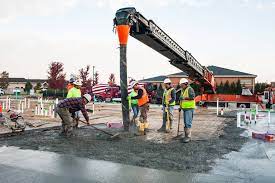
Installing mounting structures might require a solar installer. These structures will support panels and shingles. These structures can be used to connect electrical components of the PV systems to existing electric systems. Sometimes, the installers will need to build the mounting units themselves. As a result, this job requires specialized skills and education.
Job description
A PV installer is responsible for providing environmentally-friendly energy. This job requires a good understanding of solar energy and the ability to coordinate your hands. You will also need the ability to lift heavy items. It is common to install equipment on rooftops and outdoors, where there are risks of electric shock or falling. You will need to have specialized training. This is available through community colleges or trade schools.
The PV installer is responsible to select solar panels, ground them and ensure safety of the equipment. They must ensure that the system is installed in accordance with safety standards and codes. Because most PV installers work outside, the physical demands can be very high. They must have a good understanding of safety and electrical systems in order to protect their clients. They may work with a team of installers to make sure the work is done properly.

A high school diploma is required to become a solar panel installer. Many technical schools offer training on solar energy technology. These programs may take up to a year to complete. Apprenticeships and on-the-job training are also available.
Education requirements
The educational requirements for PV installers vary by region and employer, but in general, an installer must have at least a high school diploma. Employers will also prefer workers with technical training. In general, the PV installers need to know how to use various hand and power tools as well as electrical wiring and grounding.
Many training courses for PV installation professionals are offered online. These courses cover the basics of PV system components, site analysis, and application types. You should search for online courses as well as hands-on training. Many include the exam fee in the course price. After the trainee has completed the training, they should apply for certification through NABCEP.
Employers require at least a high school diploma. However, some people choose to study at trade schools and community colleges. The courses cover everything, from basics to solar system design and PV knowledge. Candidates with construction experience are especially benefited by online courses. Others choose to undergo on-the-job training under the supervision of an experienced installer. This process can last anywhere from several months to one-year.

Salary
A PV installer's salary will vary depending on their skills, experience, and where they work. The position may require workers to work alone or in teams. Team members may include other installers, roofers, electricians, and other construction-specific occupations. For solar panel installation, PV installers need to be detail-oriented and have basic electrical and mechanical skills.
Many PV installation professionals are trained at trade schools and community colleges. You will learn about safety and system design. Course lengths can be as short as a few months or as long a year. Online courses can be very helpful, especially for those with previous construction experience. Some PV installers are able to learn on the spot. On-the–job training lasts typically one month to a year. It covers safety procedures as well tools and installation techniques.
The average salary for a PV installer will be higher than the average salary for other occupations. The average annual salary of a solar photovoltaic technician is $47,670. This is approximately the same amount as the average salary for workers in the construction trades. The average annual wage for all occupations is $46,670.
FAQ
What is a Standard Contract Form?
A standard contract form can be used as a template to create contracts. These templates often include all of the necessary elements for a contract, such as the date, time and place.
It is possible to modify standard contracts forms to suit the needs of individual clients. For instance, some companies offer their standard contract forms.
These forms may not always be suitable for every situation. These forms can help you save a lot of time.
These standard contracts are worth looking at.
Where can I obtain more information about building permits
Ask your local government office (for instance, NSW Local Government Association), or talk to your real estate agent. They should be available to help you determine the right steps to take to get building permission.
What is a Service Contract Agreement?
A Service Contract Agreement (SCA) is an agreement between two parties to provide services to each other. The SCA specifies the services to be provided, their cost, time and effort required, who will pay for them, and when they should start. It also stipulates what happens if either party breaches its obligations under the agreement.
When do you have to pay the service/contractor bill?
The type of service is dependent on how much you pay. For example, if you hire a contractor to install a new roof, you would typically make payments as soon as the work was completed. In contrast, if you buy a product from a supplier, such as a kitchen range cooker, you might only pay after receiving and testing the item.
What happens if one side doesn't agree to the deal?
If you fail to complete your part of the bargain, the law allows the other party to treat your promise as broken and sue you for damages. Damages include the amount owed plus interest, court costs, and legal fees.
What documents do I need to show when applying for building permission?
Along with your SCA, proof must be provided that:
-
There are plenty of parking spaces available.
-
It is possible to use access routes;
-
All utilities are easily accessible.
-
All works must be in compliance with all applicable planning regulations.
Statistics
- (1) Ascertain the extent to that offers are based on the payment of overtime and shift premiums; and (2) Negotiate contract prices or estimated costs without these premiums or obtain the requirement from other sources. (acquisition.gov)
- Depending on the client's trustworthiness and financial stability, a deposit is usually 10 to 50% of the total contract amount. (lawdepot.com)
- While we offer all our high-quality services at competitive prices, we know that many who need our services are on fixed incomes, so we offer a 10 percent discount for seniors and military members. (homeservicecontractorsinc.com)
- (ii) Name, address, and telephone number of each proposed first-tier subcontractor with a proposed subcontract estimated at $10 million or more. (acquisition.gov)
- (v) Place or places of performance of the prime contract and first-tier subcontracts estimated at $10 million or more, if known. (acquisition.gov)
External Links
How To
What should a service arrangement include?
Service agreements (SAs) are essential for any business relationship. It sets out what you expect from one another and how you intend to achieve these expectations. The SA also specifies when and where you expect each party to fulfill its contractual obligations.
The following are key elements for a successful SA
-
Both parties must agree on the scope and required services.
-
Details of payment terms including start date and end date for delivery of goods/services.
-
A price agreed upon for the project.
-
Any additional costs such as VAT etc.
-
Whether there is any other matter that should be discussed.
-
Who will be held responsible for any problems that may arise on the job?
-
How disputes will be resolved.
-
What happens if one party breaches the contract.
-
What happens if there is a dispute
-
When does the contract go into effect?
-
What happens if one of the parties fails to perform.
-
How long will it take to pay invoices
-
Who pays for travel expenses?
-
Where the money came from.
-
What happens when the client has a change of mind?
-
What happens if the supplier doesn't turn up.
-
Who has access during construction to the site?
-
What happens when the customer cancels a project?
-
What happens if the product fails?
-
What happens if the manufacturer refuses parts?
-
What happens if equipment fails?
-
What happens if the project takes longer than expected.
-
What happens if you don't complete the work within the set timeframe?
-
What happens if the final product isn't up to expectations?
-
What happens to the cost overruns?
-
What happens when the materials are not delivered in time?
-
What happens when the material arrives damaged.
-
What happens if the products aren't up to standard?
-
What happens if the job is canceled before completion.
-
What happens if the company goes bankrupt?